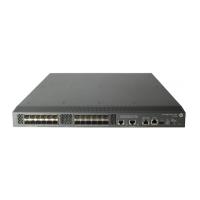372
If fully meshed interconnections exist between the clients, route reflection is not required. Otherwise, an RR
is required for routes to be reflected from one client to every other client.
Syntax
reflect between-clients
undo reflect between-clients
View
BGP-L2VPN address family view, VPLS address family view, BGP-VPNv6 subaddress family view
Default level
2: System level
Parameters
None
Examples
# In BGP-L2VPN address family view, disable route reflection between clients.
<Sysname> system-view
[Sysname] bgp 100
[Sysname-bgp] l2vpn-family
[Sysname-bgp-af-l2vpn] undo reflect between-clients
# In VPLS address family view, disable route reflection between clients.
<Sysname> system-view
[Sysname] bgp 100
[Sysname-bgp] vpls-family
[Sysname-bgp-af-vpls] undo reflect between-clients
# In BGP-VPNv6 subaddress family view, disable route reflection between clients.
<Sysname> system-view
[Sysname] bgp 100
[Sysname-bgp] ipv6-family vpnv6
[Sysname-bgp-af-vpnv6] undo reflect between-clients
reflector cluster-id
Description
Use the reflector cluster-id command to specify a cluster ID for an RR.
Use the undo reflector cluster-id command to remove the cluster ID.
By default, the cluster ID is the router ID of an RR in the cluster.
Typically, a cluster contains only one RR, in which case the router ID of the RR is used for identifying the
cluster. Setting multiple RRs can improve the network reliability. When more than one RR exists in a cluster,
use the reflector cluster-id command to configure the same cluster ID for all RRs in the cluster.
Syntax
reflector cluster-id { cluster-id | ip-address }
undo reflector cluster-id

